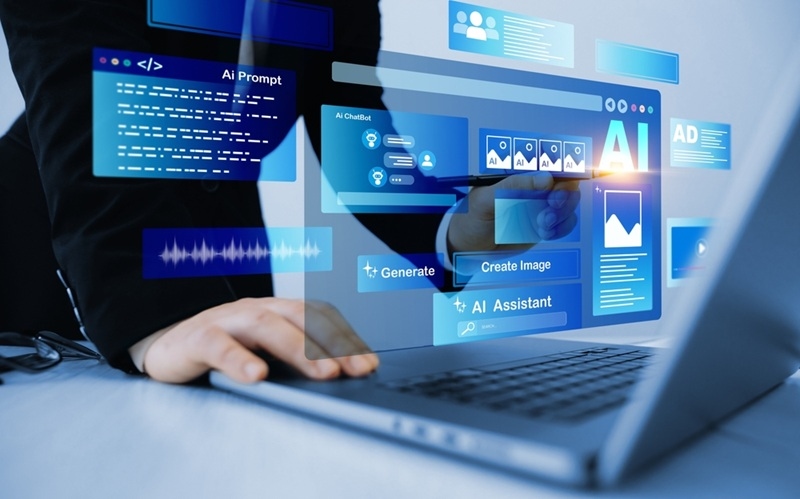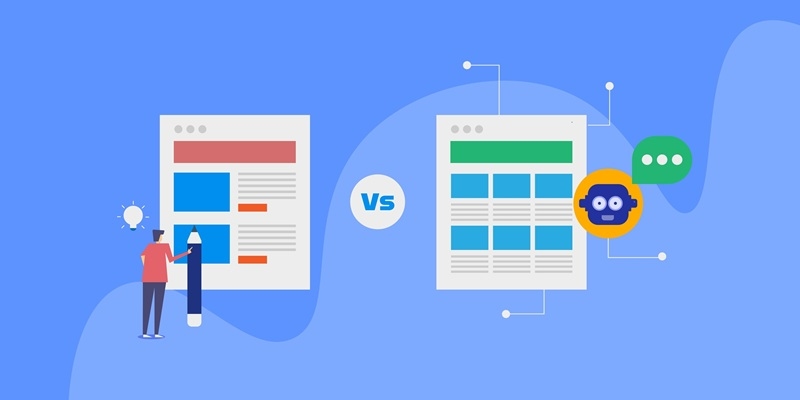Smart Ways Marketers Are Using Generative AI to Stay Ahead

Generative AI is rapidly transforming how marketers think, build, and execute campaigns. As digital competition intensifies, smart marketing teams are leaning on AI tools to gain faster insights, improve customer engagement, and generate content at scale. These innovations are not just improving efficiency, they're redefining the entire marketing strategy lifecycle.
By embracing generative AI tools, marketers can tap into real-time data, personalize content for individual customers, and optimize campaigns dynamically. From predictive analytics to AI-generated visuals, this shift is ushering in a new era of adaptive, customer-centric marketing.
Using Generative AI for Content at Scale
One of the most prominent ways marketers use AI is for content creation. From ad copy and emails to blogs and product descriptions, AI-generated content offers a scalable solution to meet growing content demands.
These tools analyze trends and customer data to craft tailored content for specific personas, helping brands stay consistent while reducing manual workload. Whether it's drafting dozens of A/B test headlines or producing visuals based on keywords, generative AI enhances creative direction without replacing human input.
Driving Personalization with Machine Learning
The power of machine learning lies in its ability to uncover patterns in consumer behavior and translate them into actionable insights. Marketers can now deliver personalized product recommendations, emails, and website content that reflect individual needs and interests.
Generative AI models can adjust messaging on the fly, shifting tone or imagery based on real-time customer behavior, a capability that's especially useful for optimizing seasonal or location-based marketing campaigns. The result? A measurable boost in customer engagement and conversion rates.
Smarter Campaign Optimization with AI Models
Marketing leaders are using AI models to predict outcomes and fine-tune messaging before deployment. By running simulations based on past customer feedback, AI can forecast campaign performance and recommend adjustments, reducing waste and improving ROI.
This level of campaign optimization is particularly valuable for small businesses with limited budgets. Instead of guessing what might work, AI tools provide actionable insights based on historical data, audience segmentation, and current market trends.
Enhancing Customer Support with AI-Powered Chatbots
Support is now part of the marketing funnel, and AI-powered chatbots are central to that shift. These tools offer real-time support, handle inquiries, and even convert leads, all without a human agent.
Modern AI agents can understand tone, intent, and even sarcasm, creating seamless experiences that reduce bounce rates and improve satisfaction. More importantly, chatbot transcripts feed back into marketing analytics, giving organizations deeper visibility into the customer journey.
Read More: Level Up Your ChatGPT Searches with Search.com
Real-Time Analytics and Trend Response
Marketers no longer wait for end-of-month reports. Generative AI enables real-time analysis of campaign performance, surfacing anomalies, emerging trends, and customer reactions as they happen.
This speed allows marketing teams to pivot quickly, whether it's adjusting messaging during a crisis or riding the wave of a viral moment. AI's ability to synthesize data from multiple channels ensures that creative decisions are backed by clear, immediate analytics.
Segmenting and Targeting with Precision
Personalization only works when targeting is precise. Generative AI helps marketers slice through generic segments and build campaigns for niche audiences based on browsing habits, interests, or purchase history.
From refining ad campaigns to reshaping landing pages, these tools let organizations connect with customers at every stage of the funnel. AI even helps craft messaging that resonates with a specific tone or demographic, increasing the likelihood of meaningful engagement.
Rethinking Strategy Across the Funnel
Generative AI is no longer confined to the creative phase; it's embedded in the full strategic stack. From product development to audience research, AI models are supporting smarter planning across the entire marketing organization.
For instance, marketers are using AI to assess customer data and suggest new product bundles, pricing strategies, or geographic targeting models. These applications of artificial intelligence are helping brands move faster, test bolder ideas, and capture market shifts early.
Mitigating Risk with AI Oversight
With so much automation, marketing teams are also investing in systems to monitor AI output. The goal is to ensure messaging stays compliant, on-brand, and free of bias. Teams are training AI with guardrails and building approval layers before content goes live.
This balance between autonomy and oversight is critical, particularly in regulated industries or when addressing sensitive topics.
Closing the Gap Between Creative and Technical Teams
One of the lesser-known benefits of generative AI is how it enables collaboration. AI can act as a creative bridge between data analysts and copywriters, designers, and strategists. By providing a shared language through insights and outputs, AI helps unify marketing departments around common goals.
This collaboration fosters innovation, reduces silos, and enables faster iteration cycles, a critical edge for brands chasing relevance in crowded digital spaces.
Final Thoughts
The smartest marketers aren't just adopting AI tools; they're embedding them across workflows to gain speed, accuracy, and adaptability. Whether it's campaign development, real-time analysis, or trend spotting, generative AI gives marketing organizations the clarity and confidence to move decisively.
Want to see how AI can transform your marketing efforts? Reach out to us and explore how SearchGPT can streamline your strategy, amplify engagement, and unlock new creative possibilities.





